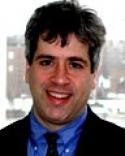NCRG Conference: Mood Disorders – The Latest Research

Each year, theNCRG Conference on Gambling and Addictionprovides an opportunity for researchers, clinicians, regulators and other stakeholders to come together, listen to research and programs from leading experts and share their experiences with gambling disorders. One of the benefits of this interaction is that the NCRG staff gets to learn directly from attendees, especially public health officials, about the speakers and topics they might find useful in their work.
One such topic that was overwhelmingly requested was the cluster of disorders previously called “mood disorders” (e.g., major depressive disorder). It turns out that the experiences of gambling treatment providers—of which many have clients with mood disorders in addition to a gambling disorder—are echoed in the published research. TheNational Comorbidity Study-Replication (NCS-R),one of the largest studies of mental health comorbidity in the country, found that more than 55 percent of people with a gambling disorder also had a comorbid mood disorder (Kessler, 2008).
With this, and the feedback of conference attendees in mind, the NCRG invitedMichael Ostacher, M.D., M.P.H., assistant professor of psychiatry and behavioral sciences at the Palo Alto Veterans Affairs Health Care System, to present on the changes in mood disorders made in the fifth edition of theDiagnostic and Statistical Manual of Mental Disorder(DSM-5).
One change that Dr. Ostacher discussed in detail was the updating of bipolar disorder’s “not otherwise specified” (NOS) diagnosis in theDSM-IVto a more specific “specified or unspecified” diagnosis in theDSM-5. Dr. Ostacher outlined several problems with the NOS diagnosis, including its tendency to serve as a catch-all for individuals with bipolar symptoms and a desire to have more specificity in the diagnosis of bipolar disorder. The new diagnosis allows clinicians to either specify a type of bipolar disorder from a list with clear definitional boundaries, or to leave the diagnosis unspecified but with the opportunity to later specify as more information becomes available. Dr. Ostacher suggested that this approach will have several advantages, including the possibility for better drug treatments stemming from the more specific definitions of the disorder.
Another change that Dr. Ostacher discussed was the addition criteria to the definition of a manic episode. In addition to the previous criteria requiring “a distinct period of abnormally and persistently elevated, expansive, or irritable mood,” the new definition also requires an “abnormally and persistently increased activity or energy.” This new “energy” requirement will tighten the diagnosis of manic episodes, with the goal of separating short term changes in mood from true manic episodes.
Did you attend Dr. Ostacher’s presentation? Tell us what you found most intriguing about the session.
References
Kessler, R. C., Hwang, I., LaBrie, R., Petukhova, M., Sampson, N. A., Winters, K. C., & Shaffer, H. J. (2008). DSM-IV pathological gambling in the National Comorbidity Survey Replication.Psychological medicine,38(09), 1351-1360.
NCRG staffConference on Gambling and AddictionDSM-5Mood DisordersNCRG Conference

